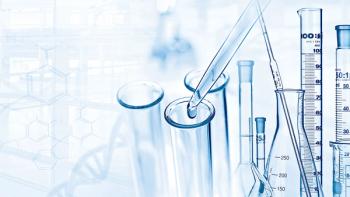
Harmonized microbiology methods
Dr Martin Cockcroft, Operations Manager at Tepnel Pharmaceutical Services, an established business of Gen-Probe Inc., speaks about harmonized microbiology methods.
Dr Martin Cockcroft, Operations Manager at Tepnel Pharmaceutical Services, an established business of Gen-Probe Inc., speaks to Pharmaceutical Technology Europe about harmonized microbiology methods.
Q1: How have regulations governing microbiological testing altered during the past decade?
During the past 10 years, there has been a move to harmonize pharmacopoeial microbiological methods the main participants being the US Pharmacopeia (USP), European Pharmacopoeia (Ph. Eur.) and the Japanese Pharmacopoeia (JP). Harmonizing a method inevitably involves change and as we are aware from the formal change control process, this can lead to substantial investment of effort to implement and where appropriate, validate the methodology. Consequently, harmonization has been a slow process, focussing on one test type at a time. Sterility and endotoxin tests were harmonized some years ago. Tepnel's Microbial examination of non-sterile products is the most recent suite of microbiological tests to join the harmonized set.
Q2: What are the barriers to good microbiological testing?
Given good quality systems and well trained knowledgeable staff, there is no excuse for doing anything other than good microbiological testing! Of course, there are often times when the task we are given challenges these systems, but part of the fun of the job is trying to work out how to do a good microbiological test on a challenging test article.
Q3: Tepnel offers harmonized methods for non-sterile microbiological testing. What are the benefits of these harmonized methods?
By adopting a harmonized method for your non-sterile testing, you have a quicker, more cost effective and easier test by which manufacturers can comply with the new regulations for European, US and Japanese Pharmacopoeias. The harmonized test also puts an end to the double testing of products (i.e., testing it once for the European market, and then having to test exactly the same test article again for the US and Japanese markets). This will save manufacturers from the costs of duplicate testing, as well as from having to handle potentially conflicting duplicate results.
Q4: How do the latest regulations for microbiological testing in the European, US and Japanese Pharmacopoeias compare with previous versions?
The harmonized regulations have significant differences to all of the previous methods. The authors have taken advantage of the complete re-write to introduce newer, more effective media for some of the specified organism tests. In comparison with the non-harmonized methods, the resulting harmonized method is most similar to the old European Pharmacopoeia method.
Q5: What are the main differences in microbiological test methods between the different Pharmacopoeias?
Harmonization has changed almost every aspect of the test, but some of the more noticeable changes are:
- Introduction of a new organism in the specific organisms section (compared to Ph. Eur.).
- Introduction of new media in the specific organisms section.
- Change to the way in which specific organism tests are interpreted on completion.
- Change to incubation times.
- More fastidious media prep requirements.
- Change to and clarification of what to count on viable count plates, as well as how to interpret these counts.
- Change to the interpretation of limits.
- Change to pass criteria for viable count validations.
- Change in the quantities required to initiate the tests.
- Change in the decision process for which tests should be undertaken, as this now depends on more than just the identity of the product.
Q6: How difficult is it to develop harmonized microbiology methods for all three pharmacopoeias?
The development of the harmonized tests by the pharmacopoeial commissions has been an arduous task, with implementation dates being delayed until everything was finally in place for its release. Likewise, 'translating' the harmonized method into a procedure suitable for following in the microbiology laboratory was a challenging task and required reference to several other information sources in addition to the pharmacopoeia.It must be remembered that alternative methods to the harmonized method can be applied to a test article as long as the alternative method can show equivalence to the current pharmaceopial method.
Q7: There is already a move towards some form of harmonization between the different pharmacopoeias. Do you think full harmonization will ever be achieved?
With the harmonization of Microbial examination of non-sterile products, endotoxin and sterility testing, a sizeable degree of harmonization is now in place. The last remaining microbiological tests requiring harmonization would include Microbiological Antibiotic Assays, and Preservative Efficacy tests. These methods show the most significant inter-pharmacopoeial differences, but I’m sure that once the dust has settled from the current changeover, the commissions will be assessing the harmonizability of these tests too.
Newsletter
Get the essential updates shaping the future of pharma manufacturing and compliance—subscribe today to Pharmaceutical Technology and never miss a breakthrough.




